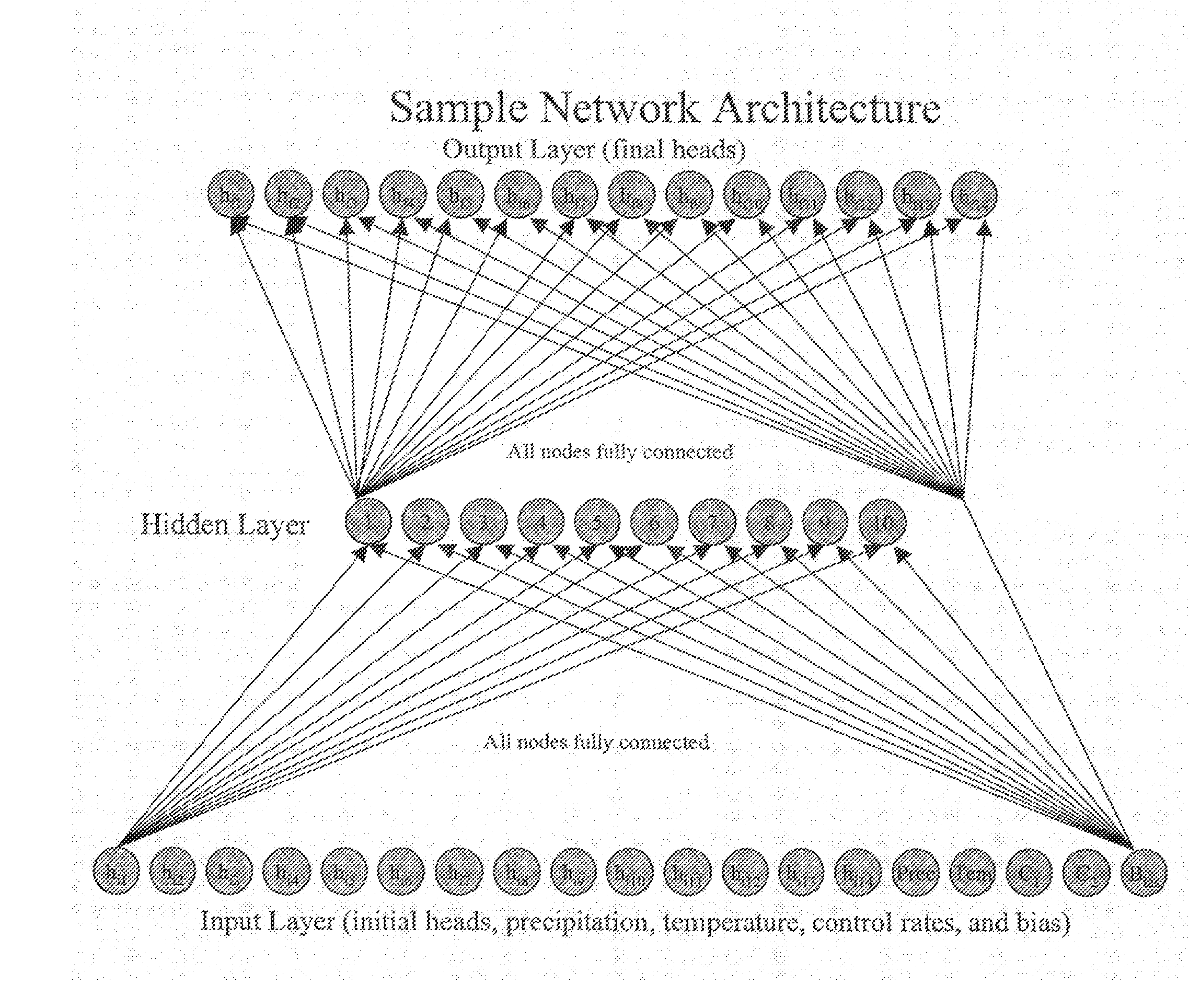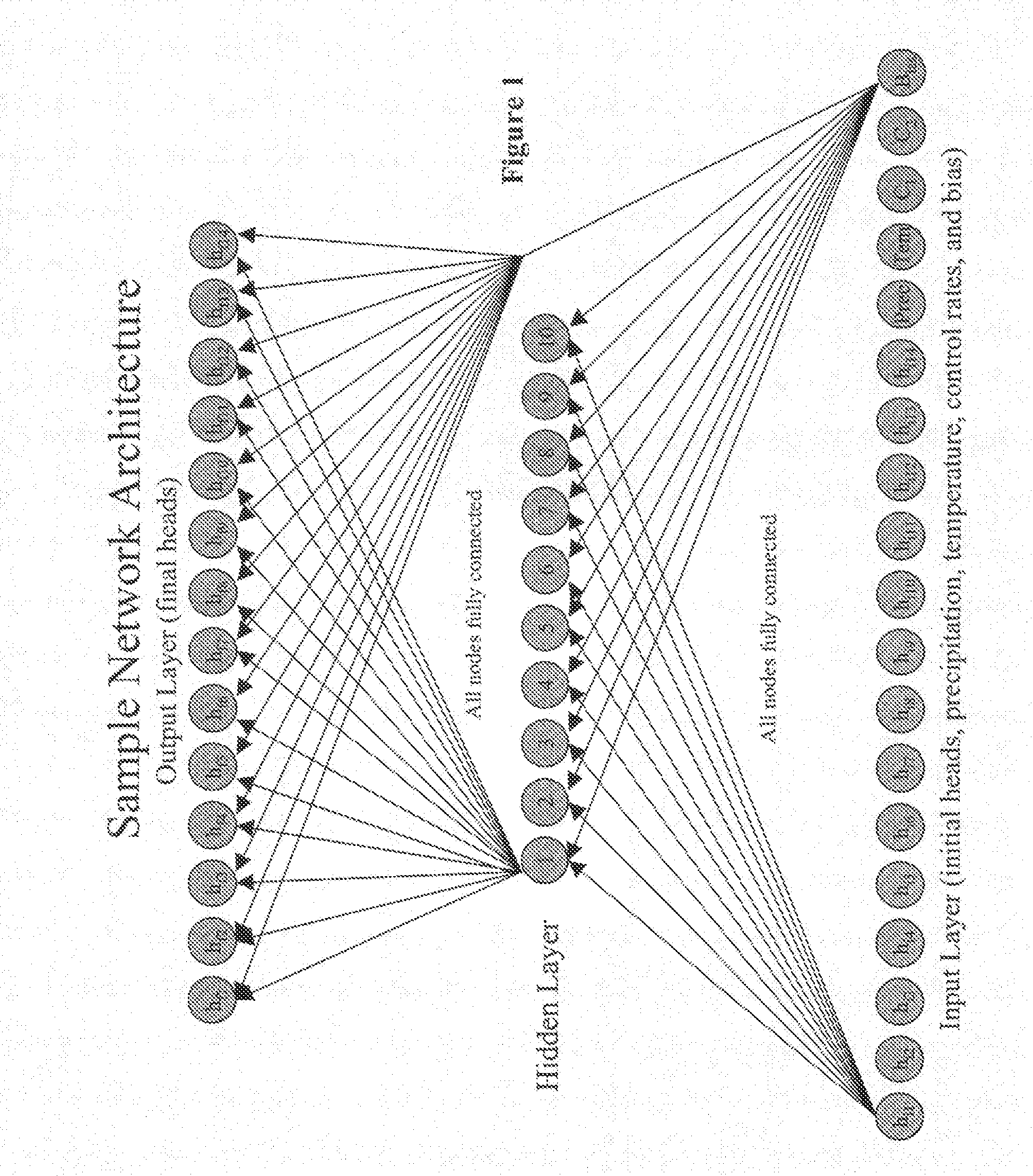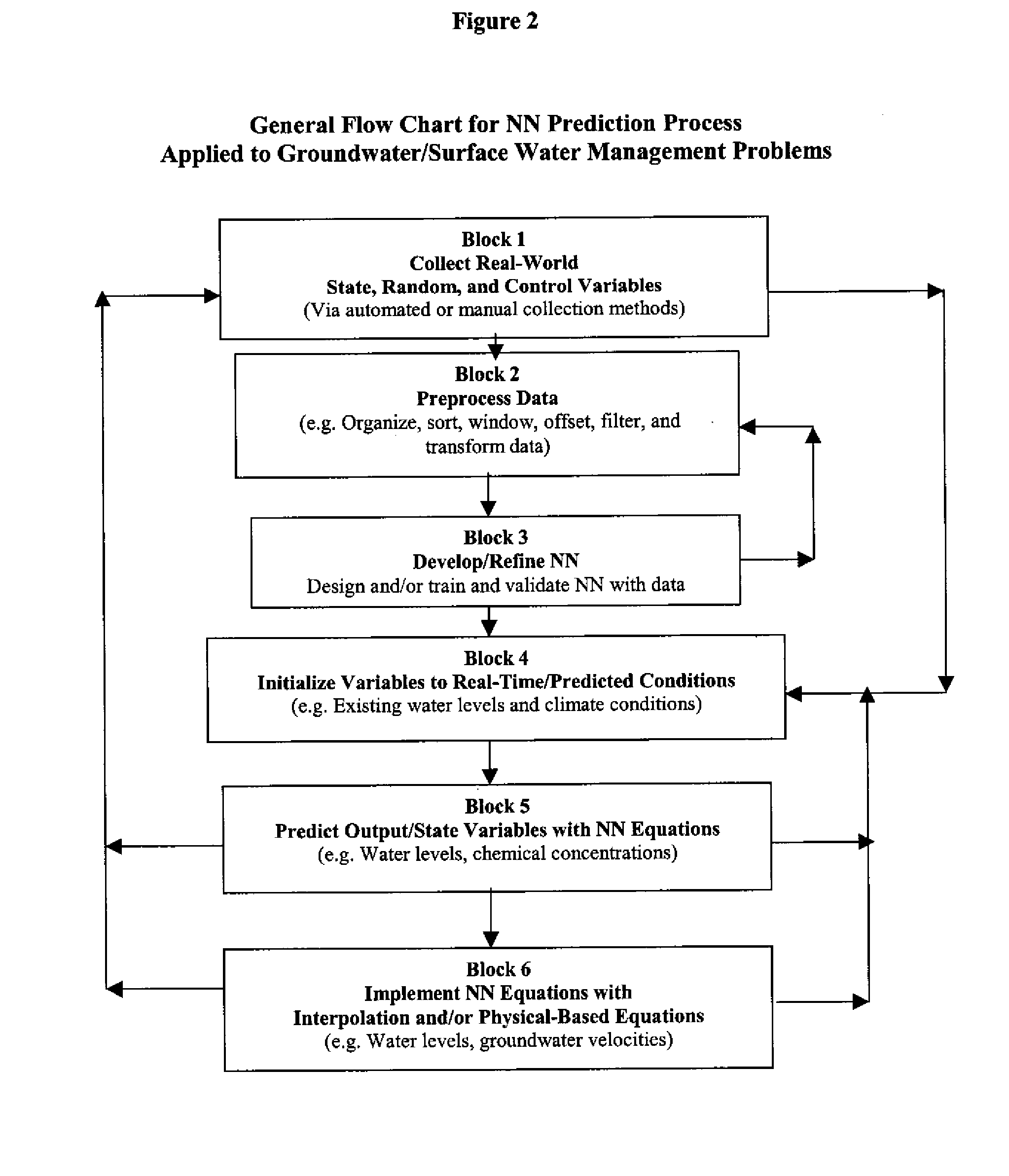Neural Network Based Predication and Optimization for Groundwater / Surface Water System
a technology of surface water and neural network, applied in the field of neural network based predication and optimization of groundwater/surface water system, can solve the problems of inadequate management system, limited field and/or laboratory measurements, and affecting the quantity and quality of water available for human use, so as to facilitate the design, improve the understanding, and improve the effect of cost efficiency
- Summary
- Abstract
- Description
- Claims
- Application Information
AI Technical Summary
Benefits of technology
Problems solved by technology
Method used
Image
Examples
Embodiment Construction
[0049] As described above, the present invention provides a new and useful method and apparatus, based on the use of a neural network, for (a) predicting important groundwater / surface water output / state variables, (b) optimizing groundwater / surface water control variables, and / or (c) sensitivity analysis to identify variable interdependence and physical relationships between input and output. The principles of the present invention are described below in connection with a neural network designed to predict output / state variables and / or optimizing system control in a groundwater / surface water system. However, from the description, the manner in which the principles of the present invention can be used for various functions in a groundwater / surface water system will be apparent to those in the art.
[0050] The invention uses neural network technology for the difficult problem of modeling, predicting, and managing hydrologic output / state variables (e.g. stream flow rates, surface water ...
PUM
 Login to View More
Login to View More Abstract
Description
Claims
Application Information
 Login to View More
Login to View More - R&D
- Intellectual Property
- Life Sciences
- Materials
- Tech Scout
- Unparalleled Data Quality
- Higher Quality Content
- 60% Fewer Hallucinations
Browse by: Latest US Patents, China's latest patents, Technical Efficacy Thesaurus, Application Domain, Technology Topic, Popular Technical Reports.
© 2025 PatSnap. All rights reserved.Legal|Privacy policy|Modern Slavery Act Transparency Statement|Sitemap|About US| Contact US: help@patsnap.com



